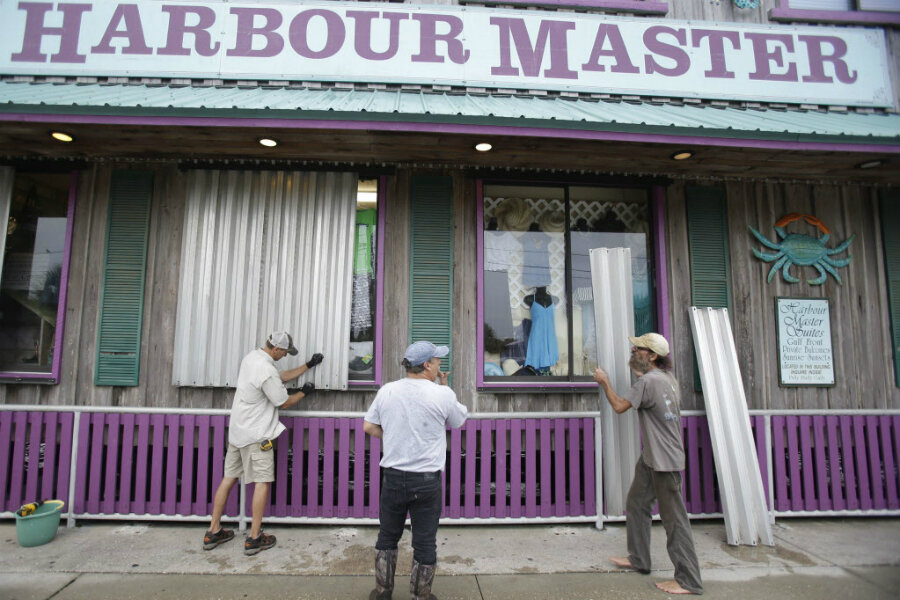As Hermine hits, Florida may face first hurricane in just over a decade
Loading...
Floridians are bracing for tropical storm Hermine, a potentially “life-threatening” system that could end the state’s hurricane-free streak.
Hermine is expected to slam Florida’s western coast as early as Thursday evening. Gov. Rick Scott urged residents to either take precautions or move inland, as the system will likely bring high winds, outages and flooding.
"This is a life-threatening situation," Mr. Scott said at a press conference. "It's going to be a lot of risk. Right now, I want everybody to be safe."
Hermine is just one of three storms – one hurricane and two tropical depressions – to form in the Atlantic this week. Hurricane Gaston appeared to threaten the southeast, but ultimately weakened and veered off. But Hermine, which has already achieved wind speeds of almost 70 miles per hour, could cause considerable damage.
Meteorologists predict that the storm will become a Category 1 hurricane by the time it hits Florida, bringing thunderstorms, heavy rain and powerful gusts along with it. Some have expressed concern that a hurricane Hermine, should it come to pass, could cause damage comparable to 1985’s hurricane Kate.
“I think the good news here – the only thing that’s going to save us from absolutely catastrophic flooding – is the fact that it will be moving,” Jeff Fournier, a meteorologist with the National Weather Service in Tallahassee, told the Tallahassee Democrat. “It’s forecast to pick up speed and blow through here.”
Many residents along Florida’s Big Bend region have not evacuated, but all are bracing for impact, arming their homes and storefronts with plywood, storm shutters, and sandbags. State officials are optimistic that municipal flood pumps will counteract the heavy rains, but some flooding is still expected. They urge residents to stay inside, and ensure that disaster supply kits are well-stocked with food and water.
In Alachua County, just inland from the state's west coast, officials have spent the past several months gearing up for hurricane season. Among other precautionary measures, they made arrangements for the county's most vulnerable citizens.
"One of our concerns that we worked out the details of a few months ago was the people in our homeless camps," the county's commission chairman, Robert Hutchinson, told The Gainesville Sun, noting that the city worried trees might become hazards in outdoor camps. "We have evacuation plans that will have RTS [regional transit system] buses to carry people away from there if the storm gets any worse."
After Hermine finally passes through Florida, it is expected to continue through Georgia and the Carolinas. Georgia's Republican Gov. Nathan Deal has declared a state of emergency for 56 counties in anticipation of flooding and strong winds.
For Florida, Hermine could potentially be the first hurricane in over a decade: The last one to land was Wilma, which entered along the Gulf Coast in 2005, killing five people and causing $23 billion in damage.
"I think people are listening and they've heard the message," Bryan Koon, the director of Florida's Division of Emergency Management, told the Tallahassee Democrat. "People are starting to make plans."
This report includes material from the Associated Press.








